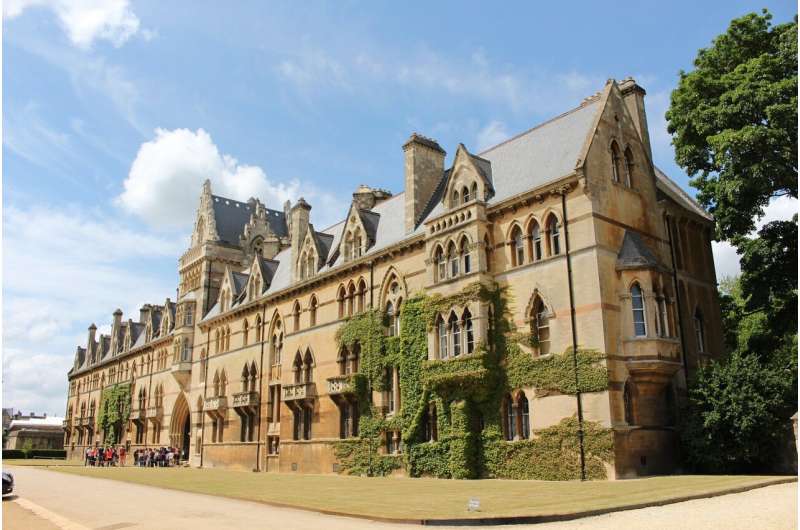This article has been reviewed according to Science X's editorial process and policies. Editors have highlighted the following attributes while ensuring the content's credibility:
fact-checked
peer-reviewed publication
trusted source
proofread
Gendered processes of recruitment to elite higher ed institutions in mid‐20th-century Britain

The number of male students at the University of Oxford from elite schools declined significantly by the middle of the twentieth century, a new study shows.
In contrast, the proportion of female students remained steady. Those with fathers with professional jobs rose dramatically by the 1960s, according to the analysis.
At the beginning of the century around 25 to 35% had fathers in professional occupations. This had risen to around 50% among those arriving at Oxford in the 1960s.
The research, published in the journal Gender & History, was carried out by Dr. Eve Worth from the University of Exeter with colleagues from the University of Oxford (Prof Aaron Reeves) and Warwick Business School (Dr. Naomi Muggleton).
The team used rare and detailed data on matriculants to the University of Oxford between 1900 and 1970. They also conducted 72 interviews with men and women who had an entry in Who's Who and analyzed interviews conducted as part of the British Libraries National Life Stories project. The research is part of the project Changing Elites in Britain since 1850.
Mothers of male students were much more likely to be housewives and mothers of female students were more likely to be employed—especially in education.
Among the earliest cohorts in the twentieth century over 70% of mothers were a housewife or homemaker. In 1940 this was three quarters of male matriculants and half of women. But this declined rapidly until less than half of the mothers of matriculants were in this occupational position.
In the early 1940s, around 13% of women and 6.4% of men matriculants had parents in the same occupation. By late 1960s this had risen to 16% for women and 14% for men.
Dr. Worth said, "Shifts in the economy, society and Oxford's admissions practices are reflected in this data. Middle class women—and the mothers of those at elite universities—changed from being predominantly housewives to professionals.
"The mothers of Oxford matriculants were increasingly entering the same types of occupations as their husbands. They had an important influence on their daughters, who gave them a sense of the value of obtaining an education in general. This intensified in the post-war period. Fathers who worked in education had a particular influence on their daughters."
The research focuses on the elite Clarendon schools for boys and 12 elite girls' schools—Cheltenham Ladies' College, North London Collegiate School, St Paul's Girls' School, Oxford High School for Girls, Queen's College on Harley Street, St Leonards in St Andrews, Clifton High School for Girls, King Edward VI High School for Girls in Birmingham, Roedean, Godolphin & Laytmer Girls' School, Wycombe Abbey, and the Benenden School.
There was a steady decline in the proportion of male matriculants getting into Oxford from the nine Clarendon schools over this period analyzed by Dr. Worth. At the beginning of the twentieth century over 25% of male students came from just these nine schools.
Among the 1960s intake, this had dropped to around 10%. This is due to changing admissions processes and the increasing trend for middle class families to send children to grammar and comprehensive schools. For girls schools this was steadier—10 to 15% of the female intake to Oxford during this period.
More information: Eve Worth et al, Gendered processes of recruitment to elite higher educational institutions in mid‐twentieth century Britain, Gender & History (2024). DOI: 10.1111/1468-0424.12785
Journal information: Gender & History
Provided by University of Oxford





















